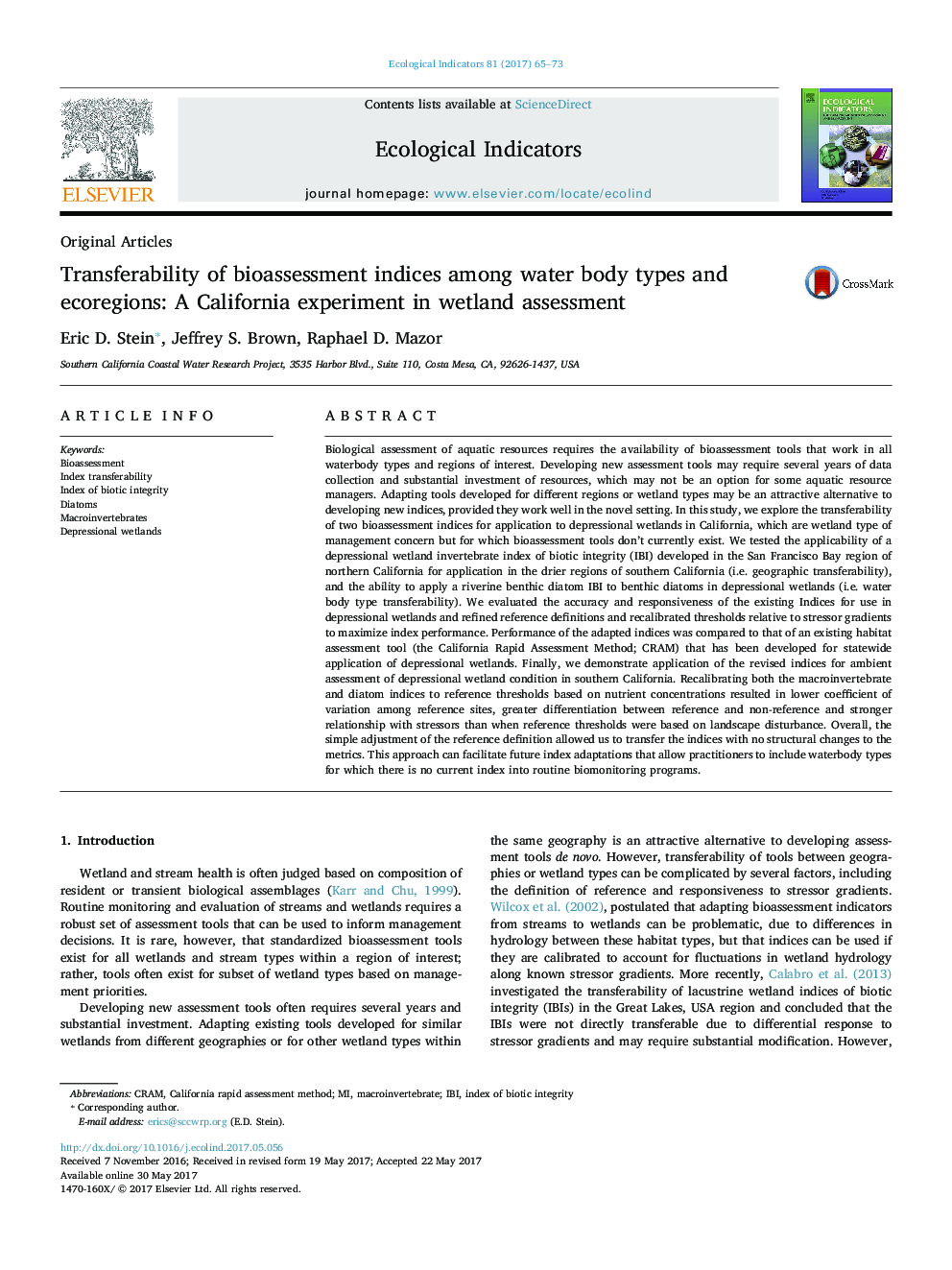| کد مقاله | کد نشریه | سال انتشار | مقاله انگلیسی | نسخه تمام متن |
|---|---|---|---|---|
| 5741411 | 1617121 | 2017 | 9 صفحه PDF | دانلود رایگان |
- Adjusting thresholds for reference condition facilitates the expansion of indices.
- Adjusted indices allow ambient assessment to be expanded to new water body types or regions.
- Water-column nutrient concentrations are more useful than landscape disturbance for identifying reference sites in depressional wetlands.
Biological assessment of aquatic resources requires the availability of bioassessment tools that work in all waterbody types and regions of interest. Developing new assessment tools may require several years of data collection and substantial investment of resources, which may not be an option for some aquatic resource managers. Adapting tools developed for different regions or wetland types may be an attractive alternative to developing new indices, provided they work well in the novel setting. In this study, we explore the transferability of two bioassessment indices for application to depressional wetlands in California, which are wetland type of management concern but for which bioassessment tools don't currently exist. We tested the applicability of a depressional wetland invertebrate index of biotic integrity (IBI) developed in the San Francisco Bay region of northern California for application in the drier regions of southern California (i.e. geographic transferability), and the ability to apply a riverine benthic diatom IBI to benthic diatoms in depressional wetlands (i.e. water body type transferability). We evaluated the accuracy and responsiveness of the existing Indices for use in depressional wetlands and refined reference definitions and recalibrated thresholds relative to stressor gradients to maximize index performance. Performance of the adapted indices was compared to that of an existing habitat assessment tool (the California Rapid Assessment Method; CRAM) that has been developed for statewide application of depressional wetlands. Finally, we demonstrate application of the revised indices for ambient assessment of depressional wetland condition in southern California. Recalibrating both the macroinvertebrate and diatom indices to reference thresholds based on nutrient concentrations resulted in lower coefficient of variation among reference sites, greater differentiation between reference and non-reference and stronger relationship with stressors than when reference thresholds were based on landscape disturbance. Overall, the simple adjustment of the reference definition allowed us to transfer the indices with no structural changes to the metrics. This approach can facilitate future index adaptations that allow practitioners to include waterbody types for which there is no current index into routine biomonitoring programs.
Journal: Ecological Indicators - Volume 81, October 2017, Pages 65-73
